The Chinese Martial Arts Salute - So Much Meaning in a Simple Gesture

One of the first things you will encounter when starting to learn any Chinese Martial Art including Tai Chi is how to “Salute”. The Salute is actually called “Wǔshù bàoquán lǐ”, which means “Martial Arts Fist Ceremony” or “Wǔshù lǐ shǒu”(Martial Arts Ritual Hands), which already gives you a feeling that it’s important. If you come from a Western background, you may think it’s “puffery”, “not important”, “old-fashioned”, or “a waste of precious class time”, but it is steeped in history and meanings that go back more than 3000 years.
History
Chinese Culture was built on a foundation of etiquette surrounding orderly and respectful behaviour. Bowing or “saluting” was one of the ways this was expressed going back more than 3000 years ago. We can see it in the writings of Confucius (551 to 479 BCE) and in the Chinese Classic “Tao Te Ching” (approx. 400 BCE). Showing anger, disrespect, arrogance and deceit were considered the signs of a morally corrupt person who should be avoided at all costs.
Hence, it’s no surprise that there is a respectful etiquette around the Chinese Martial Arts.
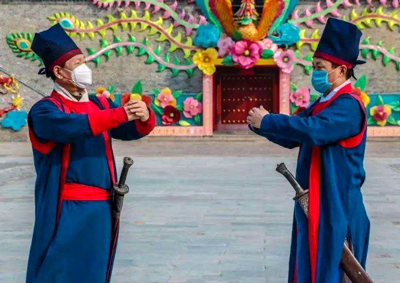 There are many and varied stories as to the origin of what we now know as the Chinese Martial Arts Salute. Some say it started in the Zhou Dynasty (nearly 3000 years ago) in answer to and in an adaption from the Chinese Classic “Tao Te Ching”; some say it has its origins in the Shaolin Temple as a way of acknowledging and respecting the act of martial training in a Buddhist environment; and some say it was introduced by the famous General Guan Yu (160 - 220CE and deified in the novel “Romance of the Three Kingdoms in 14th Century), as a way of showing respect, humility and politeness to his fellow fighters.
There are many and varied stories as to the origin of what we now know as the Chinese Martial Arts Salute. Some say it started in the Zhou Dynasty (nearly 3000 years ago) in answer to and in an adaption from the Chinese Classic “Tao Te Ching”; some say it has its origins in the Shaolin Temple as a way of acknowledging and respecting the act of martial training in a Buddhist environment; and some say it was introduced by the famous General Guan Yu (160 - 220CE and deified in the novel “Romance of the Three Kingdoms in 14th Century), as a way of showing respect, humility and politeness to his fellow fighters.
However, it would seem likely that it is actually an evolution through all of these stories given that there were, until very recently, as many variations of the salute as there are interpretations of its origin.
There is a wonderful story about a man named Shi Quan being confronted by a boxer, and just before the fight started the boxer “Saluted”, and Shi Quan, recognising the salute, stopped the fight as he understood the boxer was from the same martial lineage as himself. The variations abounded but fortunately today we can take a standardised approach in “mixed company” and be understood and respected as a member of the Chinese Martial Arts world.
Why do we Still Salute in Chinese Martial Arts
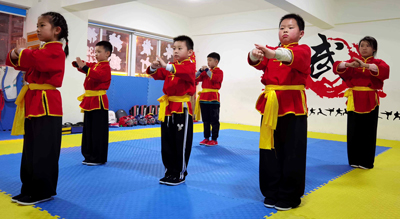 While a lot of cultures around the world have resorted to more relaxed ways of greeting and showing mutual respect, the Chinese Martial Arts salute has held fast. It is used when meeting any practitioner of the arts no matter whether they are a Grand Master or a fellow practitioner. It could be likened to the Thai “Wai”, a respectful Handshake, a Military salute, and in the case of a high-ranking official, the “Bow or Curtsy”. If you know your fellow practitioners well you may adopt a more casual approach to saying hello, but in a formal setting, or when meeting a teacher, the Salute is a must. Ignore it at your peril.
While a lot of cultures around the world have resorted to more relaxed ways of greeting and showing mutual respect, the Chinese Martial Arts salute has held fast. It is used when meeting any practitioner of the arts no matter whether they are a Grand Master or a fellow practitioner. It could be likened to the Thai “Wai”, a respectful Handshake, a Military salute, and in the case of a high-ranking official, the “Bow or Curtsy”. If you know your fellow practitioners well you may adopt a more casual approach to saying hello, but in a formal setting, or when meeting a teacher, the Salute is a must. Ignore it at your peril.
Remember that not saluting does not only reflect on you. It also reflects on your teacher. Your teacher will be considered inept and ignorant if they haven’t taught you appropriate manners.
It should be remembered that in Chinese Confucian Society etiquette dictated “Heaven and earth, the king, the teacher and the parent. Respect for all is regarded as a virtue.”
The Meaning Behind the Way we Salute
The martial salute hand formation of fist and palm is known as the “Five Lakes and Four Seas” or “Five Continents and Four Oceans”. The five comes from the open hand’s five fingers and the four comes from the fist fingers as the thumb is tucked in. We essentially see this as meaning “The Whole World” in that whoever practices the Chinese martial arts is part of one non-judgemental family across the globe.
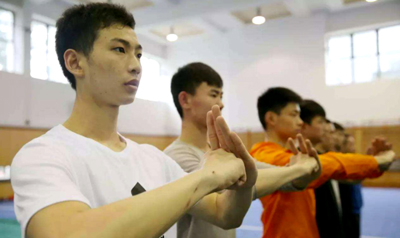 The left palm, with its thumb held closely to the hand is also said to represent the concepts of Wude (Martial Morality) including humility, respect etc., while the right fist represents the arts. So when the left palm covers the right fist it is a sign of self-control, discipline, respect and honouring of the person you are saluting. The idea being that the ultimate goal of a martial artist is to stop or avoid a fight.
The left palm, with its thumb held closely to the hand is also said to represent the concepts of Wude (Martial Morality) including humility, respect etc., while the right fist represents the arts. So when the left palm covers the right fist it is a sign of self-control, discipline, respect and honouring of the person you are saluting. The idea being that the ultimate goal of a martial artist is to stop or avoid a fight.
However, we see another interpretation, sometimes thought of as Confucian, where the left hand represents the person’s artistic and intellectual aspects reflecting sensitivity and an openness to learning, as a counter to the fist as a symbol of violence. The two combined indicating the person’s capacity and wisdom to control and temper their aggression.
In a variation of this, the palm represents the “Dragon”, while the fist represents the “Tiger. So the dragon being on top of the tiger is a symbol of conforming to rules both State and Societally.
 In Taijiquan, the Salute is sometimes seen as a balance between the Yin and Yang where the left open palm is “The Sun” or Yang and the right fist is “The Moon” or Yin, but in other spheres this concept is flipped over and the fist, being aggressive is “Yang”, and the palm covering it in protection is “Yin”.
In Taijiquan, the Salute is sometimes seen as a balance between the Yin and Yang where the left open palm is “The Sun” or Yang and the right fist is “The Moon” or Yin, but in other spheres this concept is flipped over and the fist, being aggressive is “Yang”, and the palm covering it in protection is “Yin”.
So, you can see from the above why “right fist/left palm” has enormous significance. The only time a left fist should be used is at funerals as a way of showing your commiserations. Interestingly, women used to have to salute with the left fist/right palm as a sign of subservience and humility, but that era has long since passed.
However, when you are holding a weapon (with a few minor exceptions), you hold the weapon in your left hand and have a right open palm. That would seem to go against what we’ve just expressed but by holding your weapon passively in your non-dominant hand, it indicates humility and morality, and to have the right hand open shows you “have nothing to hide”.
What NOT to Do and Why
- Hold your arms below chest level as it is a sign that you are better than the person you are saluting.
- Salute with either of your thumbs stuck up as it indicates you think you’re above everyone else and seen as very rude.
- Salute with a left fist and right palm as it is seen as disrespectful, even to the point of “asking for a fight”.
- Drop your salute before your teacher, master, grandmaster or professor as it shows a complete lack of respect. Imagine how you would feel if you shook someone’s hand and they pulled away.
How do we Salute
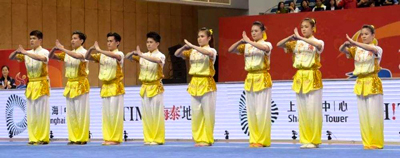 With the introduction of formal martial arts competition, the International Wushu Federation and the Chinese Wushu Association were tasked with creating a standardised set of protocols for how and when to salute if you are attending competitions or official presentations. These protocols were adapted to respect the varied salutes seen throughout the arts and set a benchmark for respectful behaviour within the wushu community.
With the introduction of formal martial arts competition, the International Wushu Federation and the Chinese Wushu Association were tasked with creating a standardised set of protocols for how and when to salute if you are attending competitions or official presentations. These protocols were adapted to respect the varied salutes seen throughout the arts and set a benchmark for respectful behaviour within the wushu community.
These standardised salutes are seen as an “international language of respect” and while we still see the “formalised traditional salutes” within specific lineages and styles, using the standardised salute will always meet with warm acknowledgement.
Standardised IWUF/CWA Salute with bare hands
- Stand upright with feet together and eyes focussed on the person you are saluting.
- Form a firm fist with the right hand, ensuring the thumb is wrapped over the index and middle finger knuckles, and that the face of the fist is flat.
- Form a “Willow Leaf” palm with the left hand – all fingers together and straight with the thumb tucked against the side of the index finger.
- Place the palm of the left hand on the face of the right fist with the base of the left hand fingers in line with the top of the knuckles on the right fist.
- The hands should be presented approximately 20 to 30cm away from the chest with the elbows bent and angled slightly downward but not pulled in.
Standardised IWUF/CWA Salutes with weapons
Each weapon has it’s own characteristic salute protocol so if you practice with a weapon you should make sure you familiarize yourself with how to show respect before you do too much more.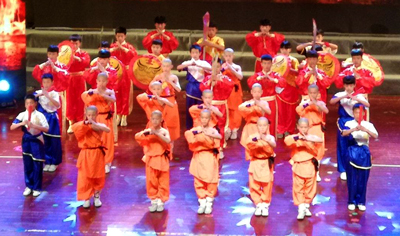
Here are a some obvious examples:
Broadsword/Sabre/Dao
- Stand upright with feet together and eyes focussed on the person you are saluting.
- Hold the Broadsword in the standard left hand “commencement” position.
- Bend the left elbow to bring the broadsword to chest height with the sharp edge up.
- Place the right hand palm on the first joint of the left thumb.
- The hands should be presented approximately 20 to 30cm away from the chest with the elbows bent and angled slightly downward but not pulled in.
Straight Sword/Jian
- Stand upright with feet together and eyes focussed on the person you are saluting.
- Hold the Straight Sword in the standard left hand “commencement” position.
- Bend the left elbow to bring the broadsword to chest height ensuring the body of the sword remains in contact with the outside of the forearm.
- Place the heel of the right hand palm at the bottom of the left index finger.
- The hands should be presented approximately 20 to 30cm away from the chest with the elbows bent and angled slightly downward but not pulled in.
Spear, Cudgel and Bang (Qiang, Gun, Stick)
- Stand upright with feet together and eyes focussed on the person you are saluting.
- Hold the Spear, Cudgel or Bang in the right hand approximately one third up from the bottom.
- Bend the right elbow bringing the right hand to chest height with the spear, cudgel or bang held vertically.
- Place the left hand palm on the second joint of the right thumb.
- The hands should be presented approximately 20 to 30cm away from the chest with the elbows bent and angled slightly downward but not pulled in.
Fan (Shan)
- Stand upright with feet together and eyes focussed on the person you are saluting.
- Hold the Fan in the Right or Left hand (depending on the commencement of the routine).
- Bend the elbow of the arm holding the fan and bring the hand to chest height ensuring the body of the fan is not touching the outside of the forearm.
- Place the heel of the palm of the opposite hand at the bottom of the fan-holding index finger.
- The hands should be presented approximately 20 to 30cm away from the chest with the elbows bent and angled slightly downward but not pulled in.
Double Weapons
- Stand upright with feet together and eyes focussed on the person you are saluting.
- Hold both weapons in the one hand as you would do for a single weapon.
- Follow the protocols for the single weapon.
- If it is not possible to hold both weapons in the one hand, hold them in a neutral commencing position and salute with the eyes and slight bow of the head.
Variations
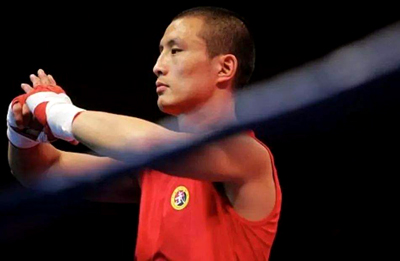 The “Palm Hold Fist” salute where the left hand is clasped over the right fist to cover it, is a salute commonly seen in quite a few of the traditional arts such as Shaolin. It is not unusual for the salute to be accompanied by a slight bow and even a gentle shaking of the hands in a gesture of propriety. It is said that this salute dates back to its use as part of the general etiquette of the traditional Han Chinese of the Zhou Dynasty.
The “Palm Hold Fist” salute where the left hand is clasped over the right fist to cover it, is a salute commonly seen in quite a few of the traditional arts such as Shaolin. It is not unusual for the salute to be accompanied by a slight bow and even a gentle shaking of the hands in a gesture of propriety. It is said that this salute dates back to its use as part of the general etiquette of the traditional Han Chinese of the Zhou Dynasty.
In some of the Southern arts such as Nanquan, a fist is made with each hand they are then paced on a slightly arched chest.
We also see the variations such as the top of the left open hand palm near the index finger touching the index finger knuckle of the right fist, and the list goes on.
The main thing to remember is that the right hand forms a fist and the left hand counters it.
Typical Class Exchange
All serious Chinese Martial Arts schools will have a Salute Protocol and it will be one of the first things you learn when you start classes.
The format will vary from school to school but here is an example of what you may encounter:
SALUTE AT START OF CLASS
Teacher Says (with salute):
Shàng kè(Start Class)
Tóngxué mén hǎo(Hello Students)
Students Say (with salute):
Lǎoshī hǎo (Hello Teacher)
SALUTE AT END OF CLASS
Teacher Says:
Xià kè(End Class)
Students Say (with salute):
Xiè xiè lǎoshī (Thank you teacher)
OR
Gǎn ēn lǎoshī (With Gratitude teacher)
Teacher Says (with salute):
Tóngxué mén zàijiàn(Goodbye Students)
Students Say (keep holding salute):
Lǎoshī zàijiàn (Goodbye Teacher)
In summary, no matter the martial arts situation, if in doubt, Salute. You will definitely gain more respect than you think. Also, given that we are living in an era of social distancing, why not encourage your friends and family to adopt the salute as well. It’s a wonderful way of showing respect!

Recent Posts
- Qigong: A Guide to Understanding the Many Paths of Energy Cultivation
- The Year of the Wood Snake and Tai Chi/Qigong: A Harmonious Interplay
- An Introduction to the Six Harmonies in Taijiquan
- Tai Chi Lessons from a Broken Piano: Work with What You Have
- Tai Chi and Cage Fighting: Zhang WeiLi, China’s UFC Champion
- Studio 14 - The Launch of a Dream
- It’s The Year of the Wood Dragon – A Great Time to Dream Big
- The 21st WTQA Festival 2023 - My First Wushu Tai Chi Qigong Festival
- Spreading the Word: Presenting the Benefits of Qigong and Tai Chi to Probus Members
- Fortune, Sex, and a Good Death: The Bat in Chinese Symbology
Tags
Archive
- March 2025 (1)
- January 2025 (1)
- November 2024 (1)
- September 2024 (1)
- July 2024 (1)
- January 2024 (2)
- December 2023 (1)
- September 2023 (1)
- June 2023 (2)
- April 2023 (1)
- January 2023 (2)
- November 2022 (1)
- August 2022 (1)
- March 2022 (1)
- January 2022 (2)
- September 2021 (1)
- May 2021 (1)
- March 2021 (1)
- February 2021 (2)
- January 2021 (1)
- December 2020 (1)
- August 2020 (1)
- April 2020 (1)
- January 2020 (1)
- October 2019 (1)
- May 2019 (2)
- April 2019 (1)
- March 2019 (3)
- February 2019 (2)
- January 2019 (3)
- December 2018 (2)
- October 2018 (1)
- July 2018 (1)
- June 2018 (1)
- April 2018 (2)
- February 2018 (1)
- October 2017 (1)
- September 2017 (1)
- April 2017 (2)
- March 2017 (1)
- January 2017 (2)
- December 2016 (2)
- October 2016 (1)
- September 2016 (1)
- August 2016 (1)
- July 2016 (2)
- June 2016 (21)
